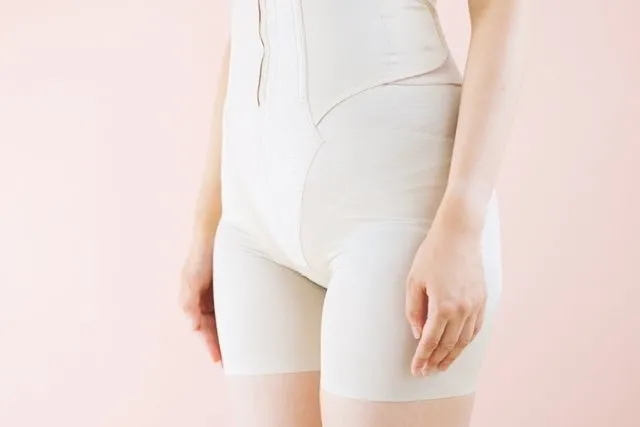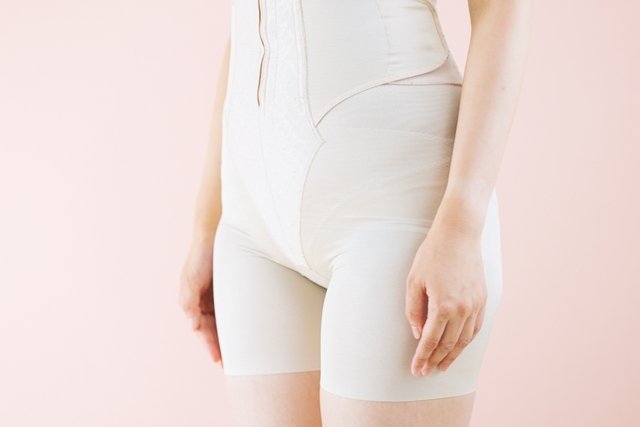The postpartum brace is recommended to provide more comfort and safety for the woman to move in day-to-day activities, especially after a cesarean section, in addition to reducing swelling and giving a better posture to the body.
Before using any belt or postpartum band, it is important to talk to the doctor and decide your need, because in some cases not using the strap can lead to the formation of a seroma, which is the accumulation of fluid at the site of the cesarean section. Learn more about seroma.
The postpartum brace can be used immediately after natural childbirth or cesarean section, throughout the day and night, without needing to remove it to sleep. However, the recommendation is that it be used for a maximum period of 3 months because from this phase the woman can already practice exercises to strengthen the abdominal muscles, and the use of the brace may impair the strengthening of this muscles.

How to use
The postpartum strap can be used soon after the birth of the baby, still in the hospital, as long as the woman feels stabilized and is able to stand alone. The period of use of the brace may vary from woman to woman and according to the medical recommendation, and may be at least 1 month after delivery and at a maximum of 3 months.
The brace should be worn throughout the day and throughout the night, being removed only to shower and to practice physical exercise, for example. Check out the best exercises to lose belly in the postpartum.
Benefits of the strap
The use of postpartum strap is not mandatory, but has some advantages such as:
- Reduces postpartum pain: the brace by making a compression in the abdomen helps to decrease pain;
- Helps to avoid back pain: use of the brace promotes greater safety and better posture, which prevents back pain that happens because the abdominal muscles are very weakened, and in addition, poor posture in daily activities after childbirth such as breastfeeding, holding the baby and putting the baby in the cradle can contribute to the appearance of pain;
- Contributes to the return of the uterus to its position: after childbirth, the uterus is still very large and the use of the belt helps in the return the uterus to the physiological position facilitating the return to normal size;
- It helps in recovery from abdominal diastasis: abdominal diastasis can happen when the belly muscles separate during pregnancy as the belly increases and remain separated after the baby is born. The postpartum brace can accelerate the recovery of diasstase by compression done on the muscles of the abdomen. Learn more about abdominal diastasis
- Prevents the formation of the seroma: the brace promotes a faster healing and prevents the appearance of the seroma that is a accumulation of fluid under the skin, in the scar region, being more common in women who have had cesarean section, however the belt is also recommended for those who had a normal delivery;
- Make the silhouette more beautiful: one of the great concerns of postpartum is the physical form and the use of the belt can contribute to self-esteem and well-being, as it models the body leaving a better silhouette to the body;
- It helps the emotional: by feeling firmer and safer, the use of the brace leaves the woman more confident for the daily tasks.
Some doctors do not recommend the use of the postpartum brace because they believe that the constant use of the strap can hinder blood circulation and reduce the ventilation of the skin by interfering with healing, in addition, prolonged use can weaken the muscles of the abdomen. Therefore, it is important to consult the doctor to decide whether or not to use.
Types of more suitable strap
Before choosing which strap to buy is advised to wear different models to know which is the most comfortable for each case. Usually the most comfortable are those that allow you to loosen the strap by parts, so you do not have to take everything always, which facilitates a lot in the trips to the bathroom.
The size of the brace to wear varies according to the physical structure of the woman. However, it is important that she is comfortable and that she does not squeeze her belly too much. The ideal is to go to the store to try and choose one that is comfortable and does not harm the breath, nor make the woman feel bothered after eating. A good tip is to put the strap, sit and eat a fruit or some biscuit to see how it feels.
In addition, you should not wear very tight straps with the intention of tuning the waist, because these actually prevent the natural contraction of the muscles of the abdomen and end up causing weakness and abdominal sagging. See the indications for using the modeling strap to thin the waist.
Regardless of the model chosen, the recommendation is that the strap be washed by hand so as not to damage the elasticity and the compression capacity of the strap.
1. High waistless strap
The high-waisted leg strap is a small strap that resembles a high-waisted panty-like can reach the navel or at the height of the breasts. They usually have side opening to facilitate dressing and opening in the background with squares to facilitate the trips to the bathroom.
Advantage: this model has the advantage of being small and easy to put and take.
Disadvantage: Women with thicker thigh may feel discomfort from tightening this region.
2. Belt with bust for breastfeeding
The brace with bust for breastfeeding is a model that can be similar to a swimsuit or a monkey with legs, with opening in the region of the breasts to facilitate breastfeeding and in the background for trips to the bathroom.
Advantage: this brace does not keep going down or winding as can happen with other models.
Disadvantage: to change the bra, you have to remove the whole strap, and it is also necessary to wash it often.
3. Strap with legs and brackets
The strap with legs and brackets can reach the navel or at the height below the breasts and in the region above or below the knees. This model has side opening of square brackets and opening in the bottom, facilitating its use.
Advantage: this model has the advantage of being more comfortable for women with thicker thighs and wider hips, because it does not tighten or mark the region.
Disadvantage: the disadvantage of this model is to be warmer and, in cities where the temperatures are higher, can cause discomfort, in addition, for women who have fluid retention the strap can mark the legs, in this case being advised to use the strap with legs below the knees.
4. Strap with Velcro
The Velcro strap is similar to a thick band adjustable to the body that surrounds the entire abdomen.
Advantage: this brace because it has greater elasticity, allows better adaptation to the body, without tightening too much and the velcro gives greater practicality and facilitates its use. In addition, it is more hygienic because it does not have the part of the panty with opening or the bra.

A medical mastologist and gynecologist graduated from the Federal University of Pernambuco, in 2008 with professional registration in CAB 17459-PE.
Update history Bibliography
- LAZA, Celmira et al. Generic care for restablecer el equilibria during el puerperio. Cuban Magazine of Sickness. 27. 1; 88-97 , 2011
- HOSPITAL RAMON SARDÁ. Normal and pathological puerperio. A clinical practice guide. 2021. Available at: “https://www.sarda.org.ar/images/Guia_de_practic_clinica_de_puerperio_normal_ypatologico.pdf”. Accessed on 20 Jan 2022
- HO, S. S.; et al. Comfort evaluation of maternity support garments in a wear trial. Ergonomics. 51. 9; 1376-1393, 2008
- HO, Simone S.M.; YU, Winnie W.M.; LAO, Terence T.; et al. Effectiveness of maternity support belts in reducing low back pain pregnancy during : a review. The Journal of Clinical Nursing. 18. 11; 1523-1532, 2009

Sign up for our newsletter and stay up to date with exclusive news
that can transform your routine!
Warning: Undefined array key "title" in /home/storelat/public_html/wp-content/plugins/link-whisper-premium/templates/frontend/related-posts.php on line 12
Warning: Undefined array key "title_tag" in /home/storelat/public_html/wp-content/plugins/link-whisper-premium/templates/frontend/related-posts.php on line 13




